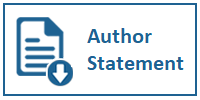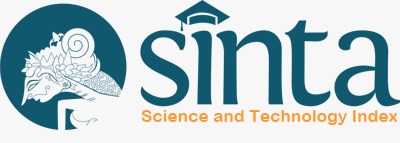Moderating Effects of Age on Employer Brand Dimensions in Increasing Job Satisfaction
DOI:
https://doi.org/10.31937/ultimacomm.v15i1.3190Keywords:
Culture; work-life balanceAbstract
As it has become widely accepted that employees are the most valuable intangible assets of an organization, brand strategy has become not limited to products and services being offered, but also in recruiting high potential candidates and retaining fit employees in the company. The study aims to empirically test the influence of employee brand dimensions on job satisfaction, formulated in the study of Karnica Tanwar and Asha Prasad, in a continuing education center in Manila. Employer brand dimensions includes training and development, reputation, diversity, organization culture, work-life balance, and ethics & CSR. The result shows that the employer brand dimensions, collectively, significantly confirms the influence employee job satisfaction among employees; and age has influence as moderating variable employer brand dimensions and employee job satisfaction
Downloads
References
Allegis. (2013). http://www.allegisglobalsolutions.com. Retrieved from Has financial services got an image problem?: http://www.allegisglobalsolutions.com/blog/2013/december/has-financial-services-got-an-image-problem
Aldousari, A. A., Robertson, A., Yajid, M. S. A., & Ahmed, Z. U. (2017). Impact of employer branding on organization's performance. Journal of Transnational Management, 22(3), 153–170. https://doi.org/10.1080/15475778.2017.1335125
Alshathry, S., Clarke, M., & Goodman, S. (2017). The role of employer brand equity in employee attraction and retention: a unified framework. International Journal of Organizational Analysis, 25(3), 413–431. https://doi.org/10.1108/IJOA-05-2016-1025
Bansal, N., & Agarwal, U. A. (2017). Exploring Work-Life Balance among Indian Dual Working Parents A Qualitative Study. Journal of Management Research, 17(2), 99–111.
Barakat, S., Isabella, G., Boaventura, J. M. G., & Mazzon, J. A. (2016). The influence of corporate social responsibility on employee satisfaction. Management Decision, 54(9), 2325–2339. https://doi.org/10.1108/EL-01-2017-0019
Berthon, P., Ewing, M., & Hah, L. L. (2005). Captivating company: dimensions of attractiveness in employer branding. International Journal of Advertising: The Review of Marketing Communications, 2(February 2015), 37-151–17241. https://doi.org/10.1080/02650487.2005.11072912
Brosch, E., & Binnewies, C. (2018). A Diary Study on Predictors of the Work-life Interface:The Role of Time Pressure, Psychological Climate and Positive Affective States. Management Revu, 29(1), 55–78. https://doi.org/10.5771/0935-9915-2018-1-55
Chambel, M. J., & Sobral, F. (2011). Training is an investment with return in temporary workers: A social exchange perspective. Career Development International, 16(2), 161–177. https://doi.org/10.1108/13620431111115613
Clayton, S. (2018). How to Strengthen Your Reputation as an Employer. Harvard Business Review, 5(May 16), 2–7. Retrieved from https://hbr.org/2018/05/how-to-strengthen-your-reputation-as-an-employer
Corley, M. C., Minick, P., Elswick, R. K., & Jacobs, M. (2005). Nurse moral distress and ethical work environment. Nurse Ethics, 381–390.
Eger, L., MiÄík, M., & ŘehoÅ™, P. (2018). Employer branding on social media and recruitment websites: Symbolic traits of an ideal employer. E a M: Ekonomie a Management, 21(1), 224–237. https://doi.org/10.15240/tul/001/2018-1-015
Esteve, M., Schuster, C., Albareda, A., & Losada, C. (2017). The Effects of Doing More with Less in the Public Sector: Evidence from a Large-Scale Survey. Public Administration Review, 77(4), 544–553. https://doi.org/10.1111/puar.12766.544
Güngör, S. K. (2016). The Prediction Power of Servant and Ethical Leadership Behaviours of Administrators on Teachers' Job Satisfaction. Universal Journal of Educational Research, 4(5), 1180–1188. https://doi.org/10.13189/ujer.2016.040531
Haider, S., Jabeen, S., & Ahmad, J. (2018). Journal of Work and Organizational Psychology Moderated Mediation between Work Life Balance and Employee Job Performance"¯: The Role of Psychological Wellbeing and Satisfaction with Coworkers, 34(1), 29–37.
Haar, J., Suñe, A., Russo, M., & Ollier-Malaterre, A. (2014). Outcomes of Work–Life Balance on Job Satisfaction, Life Satisfaction and Mental Health: A Study Across Seven Cultures. Journal of Vocational Behavior, 361–373.
Herzberg, F. (1974). Motivation-Hygiene Profiles Pinpointing what ails the organization.
Hussain, N., & Attiq, S. (2013). Relationship among Ethical Leadership , Ethical Climate , Corporate Social Responsibility and Performance Outcomes.
Ilkhanizadeh, S., & Karatepe, O. M. (2017). An examination of the consequences of corporate social responsibility in the airline industry: Work engagement, career satisfaction, and voice behavior. Journal of Air Transport Management, 59, 8–17. https://doi.org/10.1016/j.jairtraman.2016.11.002
Leekha Chhabra, N., & Sharma, S. (2014). Employer branding: Strategy for improving employer attractiveness. International Journal of Organizational Analysis, 48-60.
Locke, E. A. (1976). The nature and causes of job satisfaction. In M. D. Dunnette (Ed.). Chicago: Rand McNally.
McGrandle, J. (2017). Understanding Diversity Management in the Public Sector: A Case for Contingency Theory. International Journal of Public Administration, 40(6), 526–537. https://doi.org/10.1080/01900692.2015.1136942
Memon, M. A., Salleh, R., Noor, M., & Baharom, R. (2016). The link between training satisfaction , work engagement and turnover intention. European Journal of Training and Development, 40(6), 407–429. https://doi.org/10.1108/EJTD-10-2015-0077
Mihajlović, L. S. (2013). Employer brand and analysis of individual potential. Journal of Process Management – New Technologies, 1(1), 44–48.
Mihalcea, A. D. (2017). Employer Branding and Talent Management in the Digital Age, 5(2), 289–306. https://doi.org/10.25019/MDKE/5.2.07
Miles, S. J., & McCamey, R. (2018). The candidate experience: Is it damaging your employer brand? Business Horizons. https://doi.org/10.1016/j.bushor.2018.05.007
Mitchell, C. (2002). Selling the brand inside. Harvard Business Review, 80(1), 99–105.
Mölk, A., & Auer, M. (2017). Designing brands and managing organizational politics: A qualitative case study of employer brand creation. European Management Journal, 36. https://doi.org/10.1016/j.emj.2017.07.005
Mitlacher, L. W. (2008). ob quality and temporary agency work: challenges for human resource management in triangular employment relations in Germany. International Journal of Human Resource Management, 446-60.
Nizam, I. (2018). The Determinants of Work-Life Balance in the Event Industry of Malaysia, 5(3), 141–169.
Oludayo, O. A., Falola, H. O., Obianuju, A. & Demilade, F.. (2018). Work-Life Balance Initiative As A Predictor Of Employees' Behavioural Outcomes, Academy of Strategic Management Journal, 17(1).
Omotayo, A. O., & Adenike, A. A. (2013). Impact of organizational culture on human resource practices: a study of selected Nigerian private universities. Journal of Competitiveness.
Panicker, A., Agrawal, R. K., & Khandelwal, U. (2017). Contentious but Not Optional"¯: Linking Inclusive Workplace to Organizational Outcomes. Drishtikon"¯: A Management Journal; Pune, 8(2), 14–28.
Puncheva-Michelotti, P., Hudson, S., & Jin, G. (2018). Employer branding and CSR communication in online recruitment advertising. Business Horizons, 61(4), 643–651. https://doi.org/10.1016/j.bushor.2018.04.003
Rampl, L. V. (2014). How to become an employer of choice: transforming employer brand associations into employer first-choice brands. Journal of Marketing Management, 30(13–14), 1486–1504. https://doi.org/10.1080/0267257X.2014.934903
Subhash, C. K. A. M. (2017). Workforce diversity and organizational performance: a study of IT industry in India. Employee Relations: The International Journal (Vol. 39). https://doi.org/10.1108/ER-06-2015-0114
Suharningsih, & Murtedjo. (2017). Role of Organizational Culture on the Performance Primary School Teachers. Journal of Education and Learning, 6(1), 95. https://doi.org/10.5539/jel.v6n1p95
Tanwar, K., & Prasad, A. (2016). The effect of employer brand dimensions on job Satisfaction: gender as a moderator. Management Decision, 54(4), 854–886. https://doi.org/10.1108/EL-01-2017-0019
Tanwar, K., & Prasad, A. (2017). Employer brand scale development and validation: a second-order factor approach. Personnel Review, 46(2), 389–409. https://doi.org/10.1108/PR-03-2015-0065
Thomas, O., & Davenport. (2018). How diversity (that is included) can fuel innovation and engagement – and how sameness can be lethal. Strategic HR Review, 17(3), 119–125. https://doi.org/10.1108/SHR-03-2013-0016
Tkalac VerÄiÄ, A., & SinÄić Ćorić, D. (2018). The relationship between reputation, employer branding and corporate social responsibility. Public Relations Review, (March). https://doi.org/10.1016/j.pubrev.2018.06.005
Urbancová, H., & Hudáková, M. (2017). Benefits of Employer Brand and the Supporting Trends. Economics & Sociology, 10(4), 41–50. https://doi.org/10.14254/2071-789X.2017/10-4/4
Walsh, G., & Beatty, S. E. (2007). Customer-based corporate reputation of a service firm: Scale development and validation. Journal of the Academy of Marketing Science, 35(1), 127–143. https://doi.org/10.1007/s11747-007-0015-7
Downloads
Published
How to Cite
Issue
Section
License
Ultimacomm Jurnal Ilmu Komunikasi allows readers to read, download, copy, distribute, print, search, or link to its articles' full texts and allows readers to use them for any other lawful purpose. The journal allows the author(s) to hold the copyright without restrictions. Finally, the journal allows the author(s) to retain publishing rights without restrictions
1. Authors are allowed to archive their submitted article in an open access repository
2. Authors are allowed to archive the final published article in an open access repository with an acknowledgment of its initial publication in this journal














